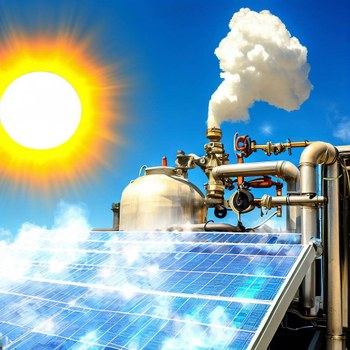Solar CO2 conversion

Over 80% of the world’s primary energy supply is currently provided by fossil fuels. This implies the release of about 34 Gt/y of CO2 into the atmosphere, which is the primary cause of global warming. Climate stability is a key prerequisite for the existence of modern civilization, therefore the decarbonization of the global economy is a pressing need in the interest of present and future generations. Electrochemical and photoelectrochemical (PEC) reduction of CO2 is an important step in mitigating uncontrolled carbon emissions. Since the CO2 molecule is inert, it is imperative to investigate appropriate catalysts with good stability, fast kinetics, high selectivity for value-added products, and low cost. Hence a major challenge in the study of the CO2 reduction reaction (CO2RR) is the development of cathodic materials with improved photo-/electrocatalytic properties, considering also the suppression of the competitive hydrogen evolution side reaction. Among the many catalysts explored for electrochemical CO2RR , copper-based materials are some of the most promising thanks to the reduced proneness to hydrogen evolution,competing with CO2RR, and their tendency to selectively produce valuable hydrocarbons and alcohols. In particular, Cu-nanostructures, e.g. nanowires or nanocubes , are reported to produce high faradaic efficiency towards C2+ products, such as C2H4, despite the sluggish kinetics of the reaction involving 12-electron/12-protons. Further improvement of the catalyst activity and selectivity may be induced by tuning surface chemistry with heteroatoms, e.g. Sn, In or I.
The tunable catalytic properties of Cu nanostructures can be further improved by coupling to Cu2O photocathodes, in order to exploit the produced photoinduced potential to reduce the required external bias to drive the catalytic process. However, cuprous oxide is typically affected by rapid degradation due to disproportionation. This may be prevented by passivation with multiple oxide layers, whose low mobility is often resulting in reduced charge extraction, thus limiting the maximum photocurrent. In order to achieve bias-free PEC CO2RR cell, semiconductor photoanodes with compatible band gap and energetics can be employed in tandem configuration.
Understanding the mechanisms of both cathodic and anodic reactions is of the utmost importance to optimize the catalyst materials. Reaction by-products and intermediates as well as morphological changes during the reactions can block active sites, deactivating the catalysts. Operando studies are the best way to investigate this, such as X-ray Absorption spectroscopy.